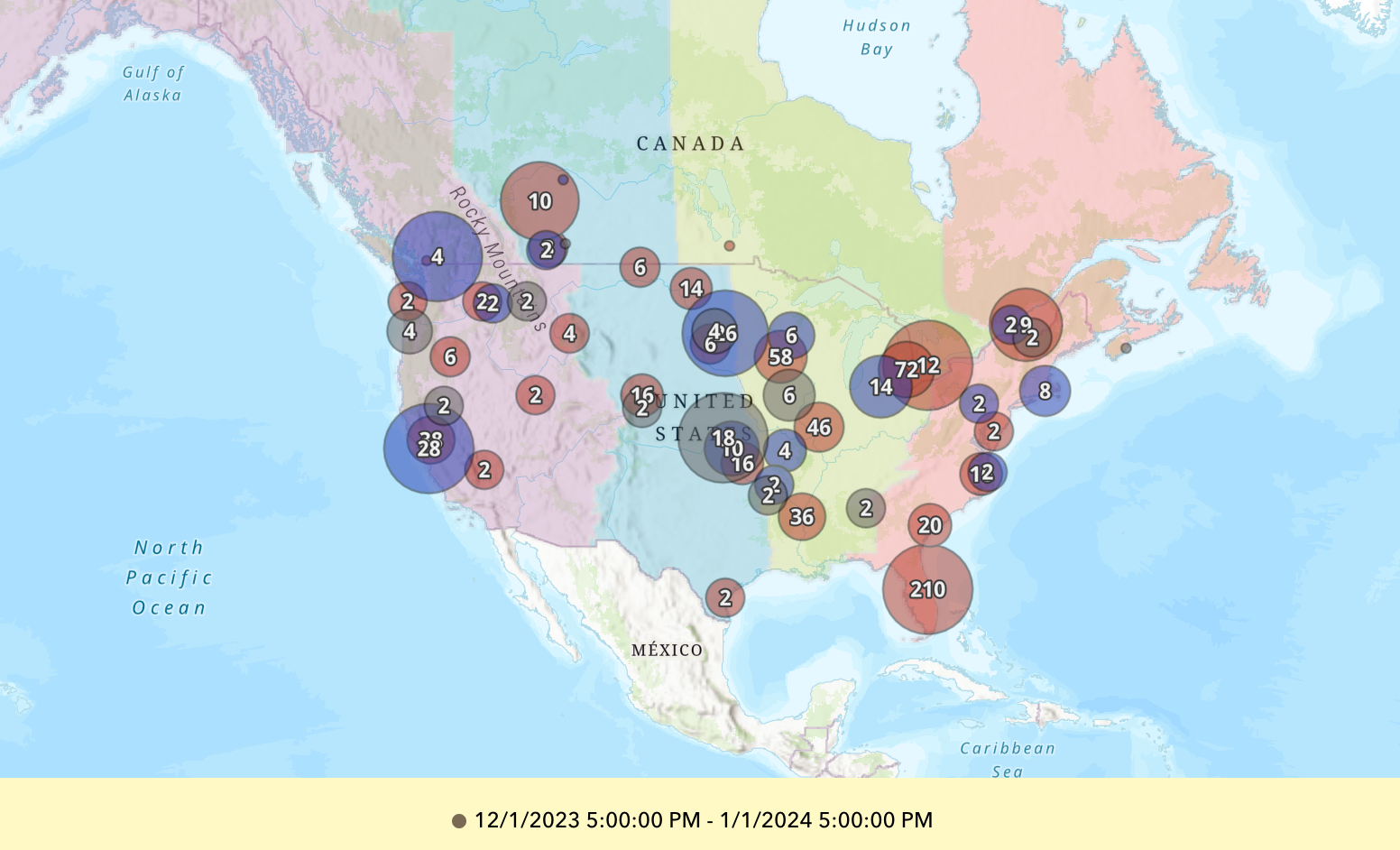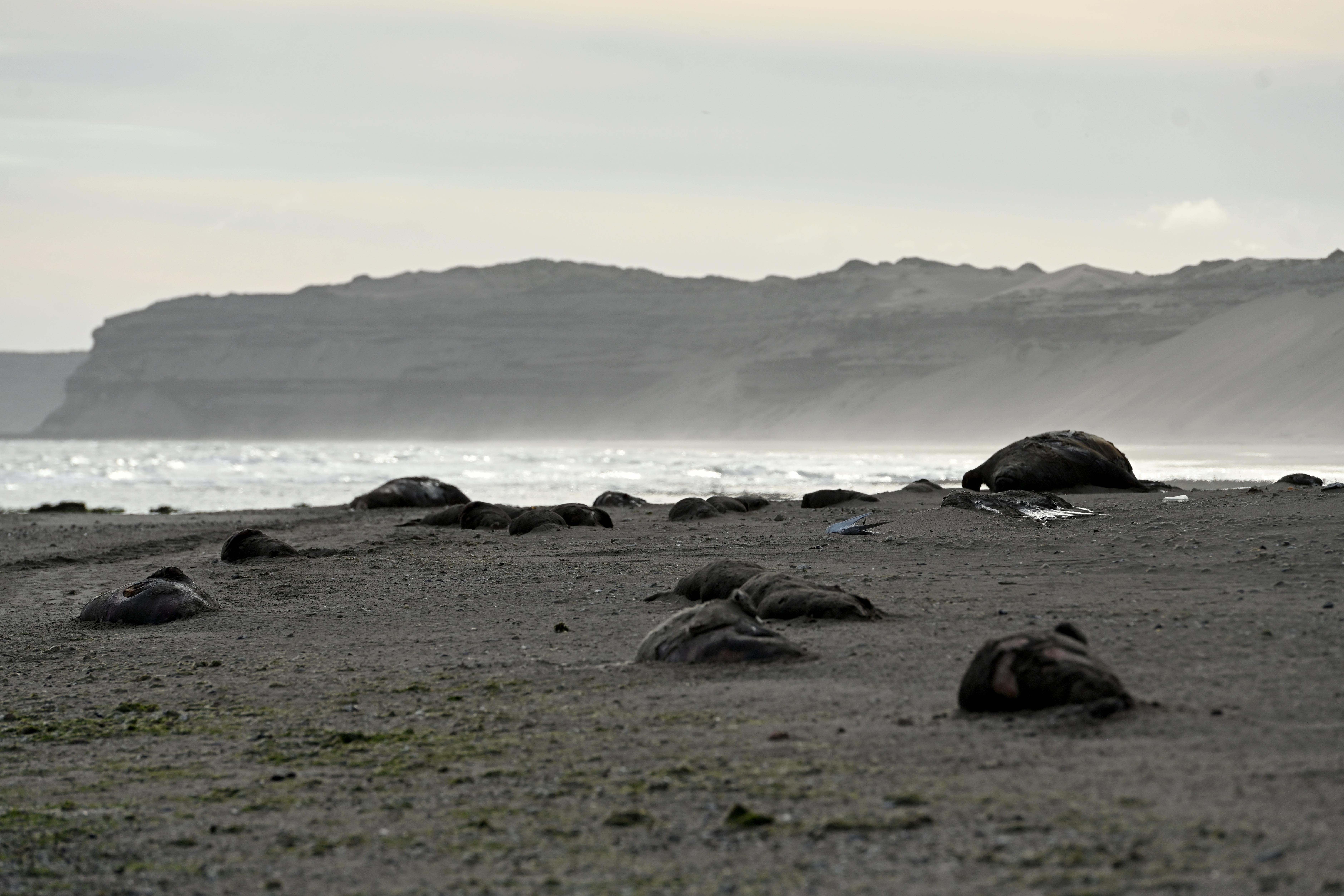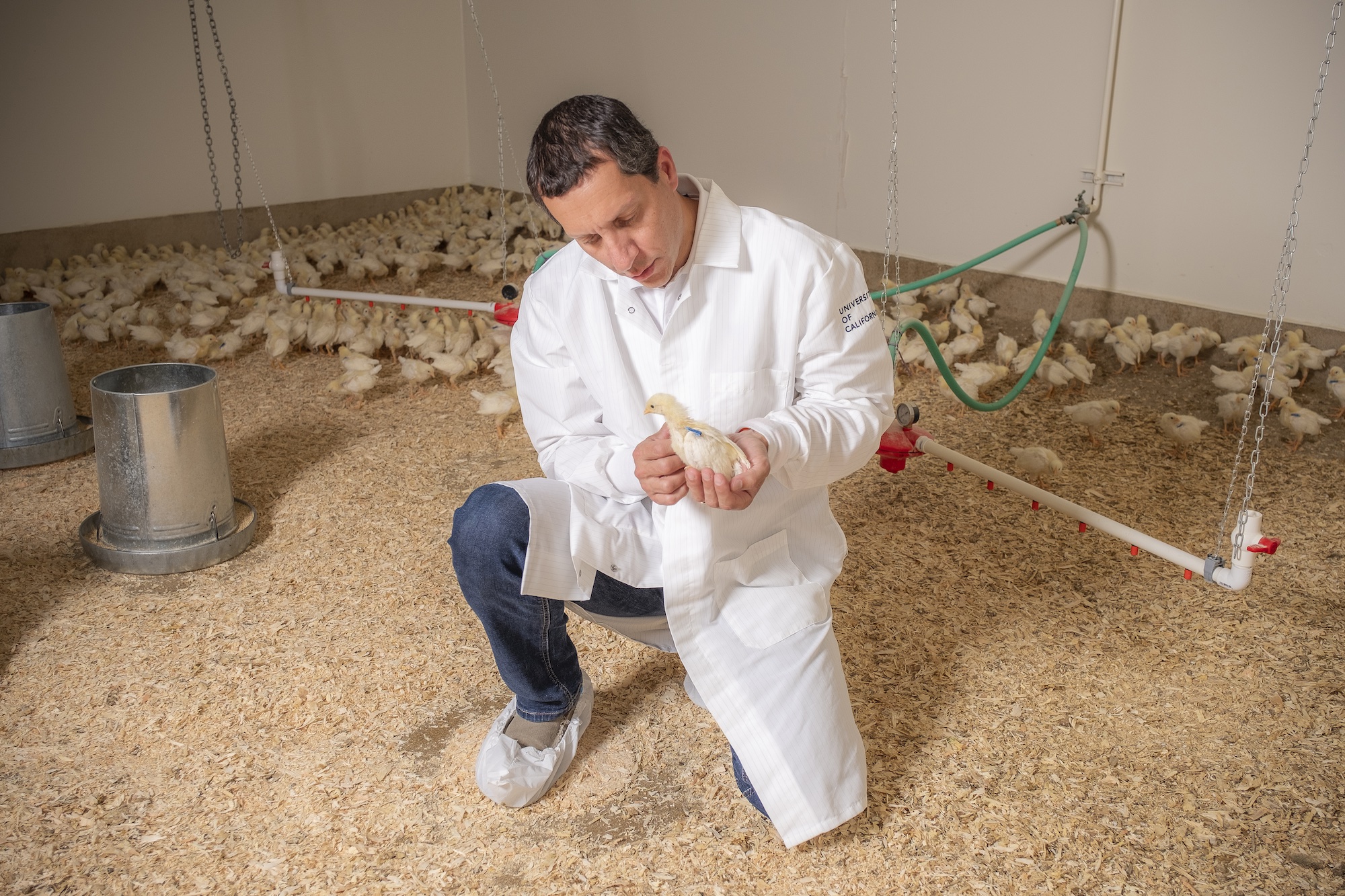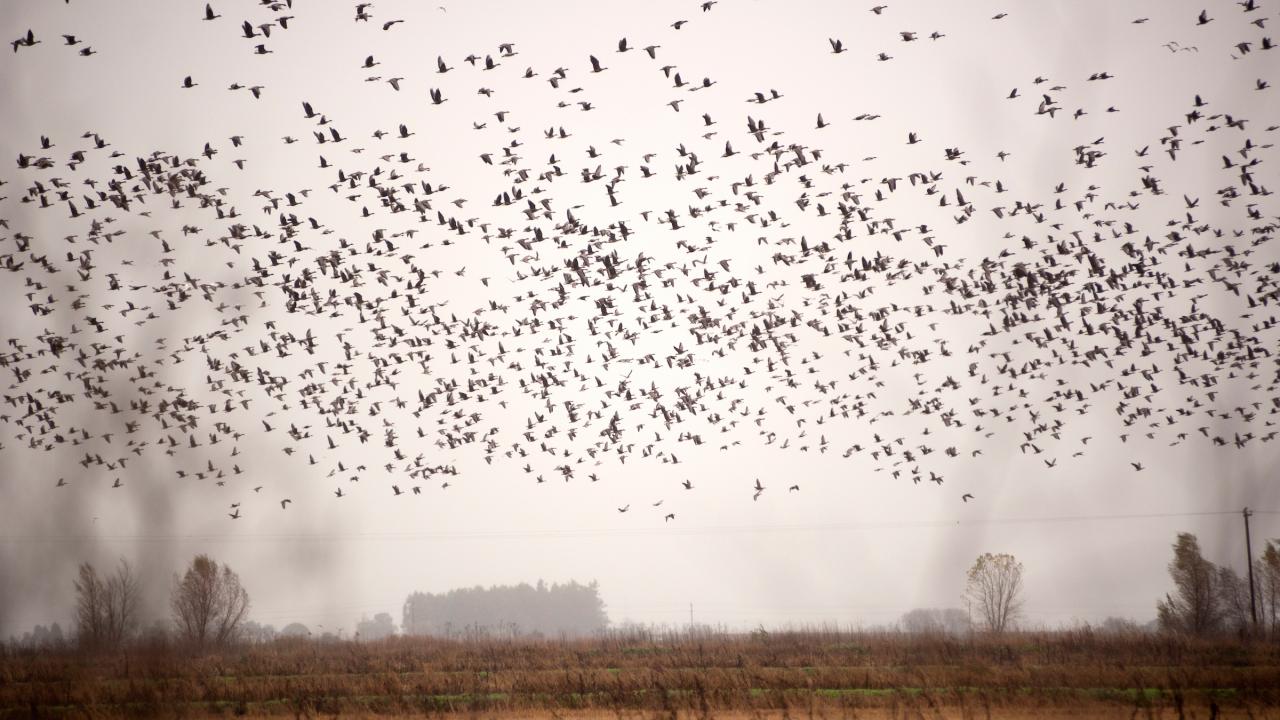Avian influenza continues to spread worldwide. UC Davis scientists are helping to monitor its expansion among wildlife, poultry and other species.
Wildlife and avian flu
In early April, Marcela Uhart, director of the Latin America Program at the UC Davis School of Veterinary Medicine, addressed the current state of avian flu at a webinar hosted by the UC Davis Grand Challenges’ Institute for Pandemic Intelligence.
“It is causing a totally unprecedented scale of global spread and mortality,” said Uhart on the newest strain. “We have never seen anything like this before. It’s killing hundreds of thousands of birds, and tens of thousands of mammals.”
Uhart is especially worried about new strains and virus movement into new species. Currently, the largest scales of mortality have been documented in seabirds, waterfowl, and mammals like elephant seals. A few human cases have also been documented, along with cases in domestic pets and livestock.
Uhart has documented cases in the wild from the beaches of Argentina to Antarctica, and continues to track the impacts on affected ecosystems.
“For those of us who have been on the beaches these last couple of years, you experience the silence–these animals are just not there."
“For those of us who have been on the beaches these last couple of years, you experience the silence––these animals are just not there,” Uhart said. “ Maybe over time they’ll come back, but we just don’t know what the consequences are. In the conservation world, we’re bringing this message that we need to be more alert and monitor what the impacts are in the near future.”
The spread to poultry
Cases of avian influenza have jumped from wild birds to commercial and backyard poultry farms across the United States and Canada.
Maurice Pitesky, associate professor in Cooperative Extension at the UC Davis School of Veterinary Medicine, and Shane Feirer with University of California Agriculture and Natural Resources, have developed an interactive map showing its spread from November 2021 to present day, with red dots representing wild bird cases, purple representing commercial poultry, and gray representing backyard poultry.

Related

Avian Influenza Adapting to Spread to Marine Mammals
Findings raise concerns about wildlife conservation and health.

Media Experts on Avian Influenza
UC Davis experts on poultry, biosecurity, virology and more.
Media Resources
- Kat Kerlin, UC Davis News and Media Relations, 530-750-9195, kekerlin@ucdavis.edu
- Amy Quinton, UC Davis News and Media Relations, 530-752-9843, amquinton@ucdavis.edu
Malia Reiss is a science news intern with UC Davis Strategic Communications. She studies environmental science and management at UC Davis.
